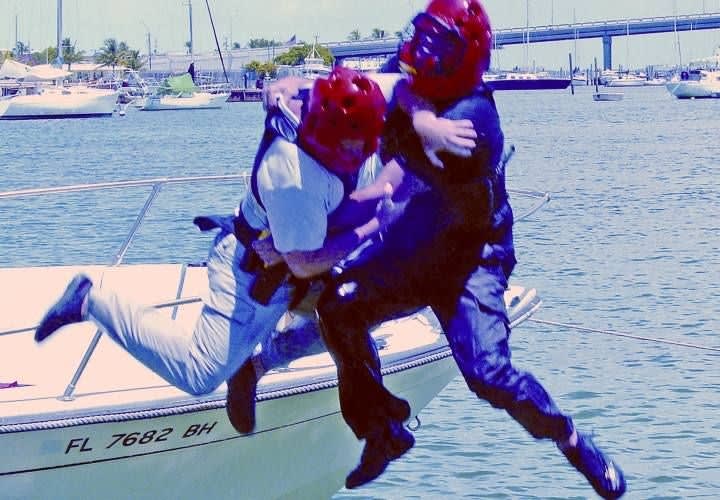Now, let’s make the swimming exercise more like what you would probably have to do in the real world. Odds are if you go into the water on duty, you are going to do so for one of two reasons: to rescue someone or because a subject has thrown you in the water. In both cases, you will need to keep your head out of the water, so that you can scan for this person. So for the next part of this training, swim a designated distance with your head above the water. Now repeat the same exercise with your weapon in hand.
When swimming with a firearm, remember to keep your trigger finger off the trigger and alongside the trigger guard. If you are assigned to a watery environment such as marine patrol, or even beach patrol, consider using a lanyard at the base of your weapon to secure it to your dutybelt while swimming.
Remember, this training is specifically designed to teach you to use force and take control of subjects in the water. So the next phase of the training is to learn how to control and stabilize a subject in the water.
It’s here where treading water becomes critical. If you are using your hands to fight a subject, your legs will be your only means of keeping your head above water. Practice grips and grabs, as well as empty hand strikes and other force options while treading water. (For more on how to fight a resistive suspect in water, see the sidebar “Fighting in Water” below.)
Remember, the goal of this training is one, to learn how to survive a sudden plunge into deep water while on duty and, two, to learn how to use force in the water to control and arrest resisting subjects. Consequently, you should train to use your weapons while treading water. These include your baton, your chemical spray, and even a replica of your sidearm. Keep in mind that it might be difficult to determine whether a subject is resisting or merely panicking.













